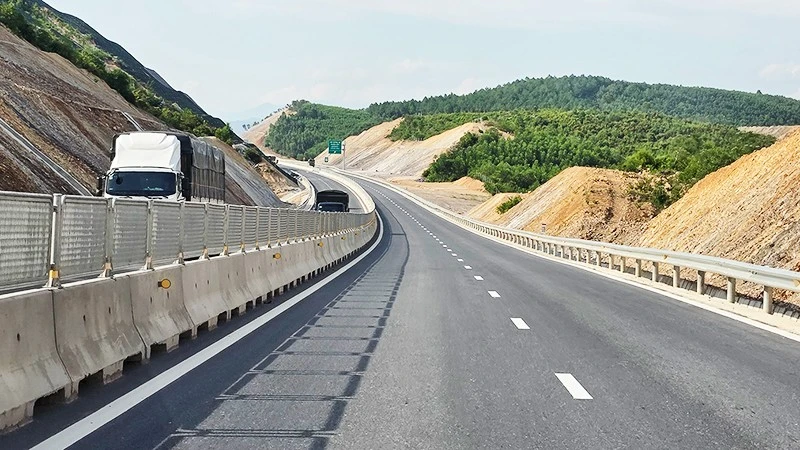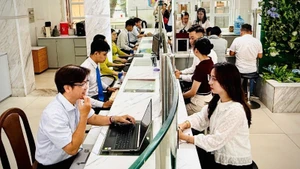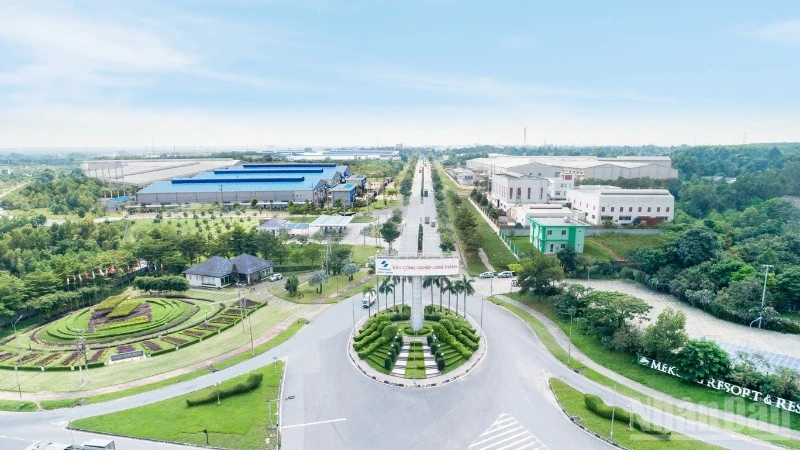Good signal contributing to promoting economic restructuring
According to the General Statistics Office, in the first five months of 2024, FDI capital flows into Vietnam have shown positive signs, with 11.07 billion USD, including newly registered capital, adjusted and contributed capital, to buy shares and buy contributed capital of foreign investors, up 2% over the same period last year. Specifically, there were 1,227 newly registered projects, a year-on-year increase of 27.5%, with a total registered capital of nearly 7.94 billion USD, up 50.8% over the same period last year.
Assessing this capital flow, Vice President of the Vietnam Association of Foreign Investment Enterprise (VAFIE), Nguyen Van Toan, said the highlight of FDI capital flow into Vietnam, in the first five months of this year, was that new FDI investment remains higher than the same period last year, in terms of both the number of projects and registered investment capital. This shows that foreign investors are still interested in the investment environment in Vietnam, as an attractive investment destination. In particular, the total FDI capital realised in the year’s first five months was estimated at 8.25 billion USD. This is an important "measure" proving the effectiveness of FDI capital flow into the economy.
In addition to Vietnam's efforts to attract FDI, there is a new wave of FDI investment, with factors such as the "battle" to control core technology, chip technology, and future technology opening up opportunities for Vietnam to attract high-tech FDI from the US, Europe, and other partners. Specifically, FDI investors have poured capital into Vietnam with a series of projects worth billions of USD, such as Jinko Solar Hai Ha photovoltaic cell technology complex project (in Quang Ninh Province), with registered investment capital of 1.5 billion USD, Sumitomo Mitsui Banking project, with buying shares of VPBank worth 1.5 billion USD, and Fulian Precision Technology Factory project in Bac Giang Province, with investment capital of 621 million USD, etc.
According to Toan, because the quality of FDI capital flows is still the most important issue, this can be considered a good signal for promoting economic restructuring and industrial development in Vietnam. Attracting FDI focusing on this field also helps spread to the domestic business community, creating opportunities for Vietnam to develop high-quality labour resources related to industry. At the same time, it will contribute to realising the goal of becoming a modern industrial country with high average income by 2030, with a vision of becoming a developed country with high income and leading industrialised nations in Asia by 2045, in the spirit of Resolution No. 29-NQ/TW of the 13th Party Central Committee.
Realising major policies and consistent goals
However, according to many economic experts, in the past, FDI focused on the processing and manufacturing industry because of Vietnam’s land rental prices and preferential investment attraction policies, such as open import-export policies, cheap labour, and loose environmental management. However now everything has changed, attracting FDI into this field requires higher requirements and opportunities for domestic enterprises to participate more deeply and create more added value in the value chain.
Therefore, in addition to the number of investment projects, it is time for Vietnam to pay greater attention to the quality of investment projects towards high-quality projects, Toan said.
Regarding the issue of improving the quality of FDI capital flows, he affirmed that after more than 35 years of attracting FDI capital flows, Vietnam has accumulated a plethora of experience. Vietnam is considered an attractive destination for the world's leading corporations, with high-quality FDI projects, spillover effects and important contributions to economic growth. Vietnam has also issued many documents on foreign investment attraction, notably Resolution No. 50-NQ/TW, on attracting high-quality FDI capital flows.
However, the VAFIE’s Vice President frankly pointed out, that so far Vietnam has only attracted a few semi-conductor enterprises in Bac Giang, Bac Ninh, Hanoi, and Ho Chi Minh City, with limited investment scale of only a few hundred million to a few billion USD. To attract quality FDI capital flows, in addition to the Government's policies, Vietnamese enterprises need sufficient capacity, conditions, technology, and management capacity, to cooperate with FDI enterprises in supporting or participating in their supply chains.
Sharing this view from another perspective, the Vice President of the Hanoi Supporting Industry Business Association (HANSIBA) also said that to succeed with the new wave of FDI, Vietnam must take better advantage of opportunities, creating a turning point in quantity and quality in attracting FDI investment. Suppose Vietnam promptly changes direction in human resource training, and Vietnamese enterprises themselves must mature and assert themselves to confidently "shake hands" with high-quality FDI enterprises. In that case, the country will attract high-tech investment into Vietnam in 2024 and the following years.
















